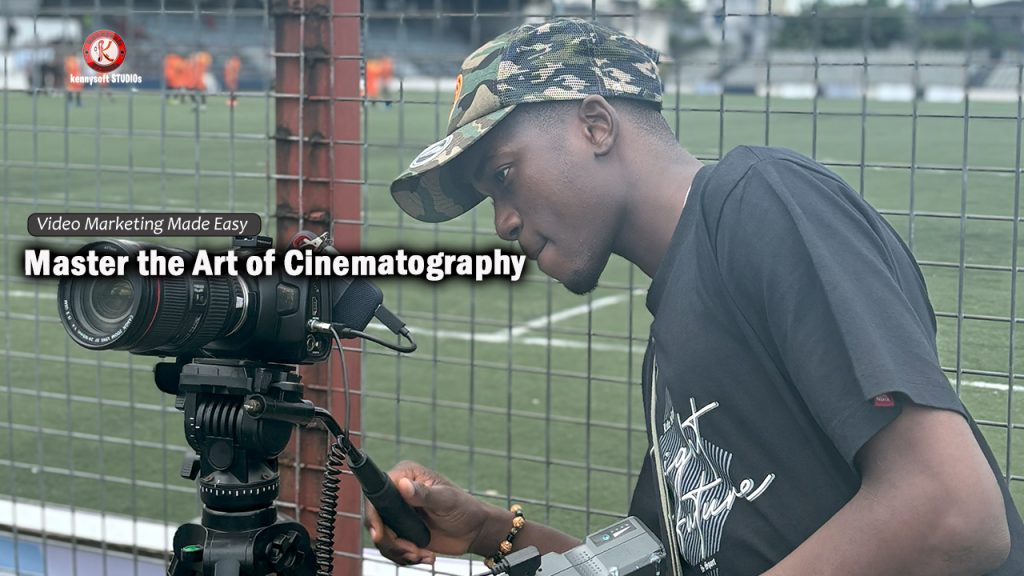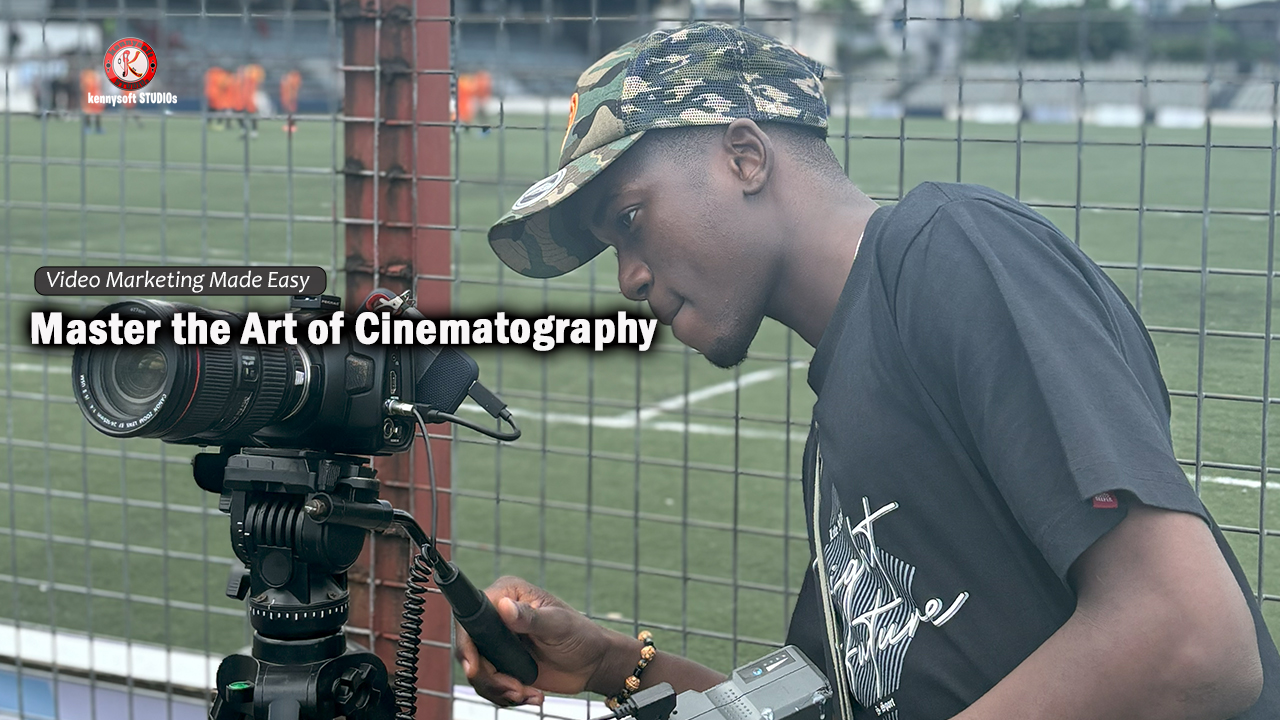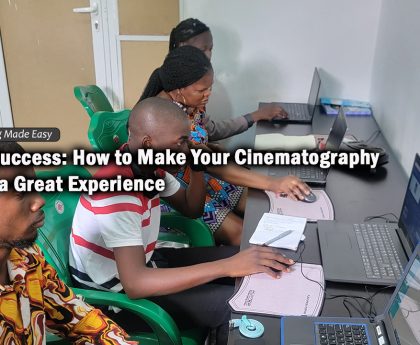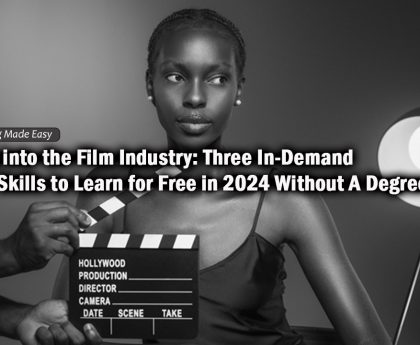
Cinematography as the heartbeat of visual storytelling entails lighting, camera angles, and composition which come together to craft compelling narratives. Mastering this art is essential for any filmmaker, as it shapes how an audience perceives and experiences a story.
What is Cinematography?
Cinematography refers to the process of capturing visuals for a film or video. It is the art of capturing moving images to visually tell a story. It’s not just about pointing a camera at a subject and pressing record; it’s about carefully crafting every shot to evoke emotions, guide the audience’s attention, and enhance the narrative. Whether you’re an aspiring filmmaker, a student of film, or simply a curious observer, understanding the basics of cinematography is essential for appreciating and creating impactful visual stories.
It encompasses the camera work, lighting, shot composition, and visual style that shape how a story is told. A skilled cinematographer (often called the Director of Photography, or DP) works closely with the director to ensure that the visual elements support the film’s narrative and mood. In this article, we’ll explore the key components of cinematography, tools used, Objective vs. subjective camera, shooting a basic scene and how you can master this art.
Key Components of Cinematography
1. Framing and Shot Composition
Framing and shot composition are the foundation of visual storytelling. They determine how the subjects and objects are arranged within the frame, guiding the audience’s focus.
- Rule of Thirds: A basic principle in cinematography where the frame is divided into nine equal parts by two horizontal and two vertical lines. Placing key elements along these lines or intersections creates a more dynamic and visually appealing shot.
- Symmetry and Balance: Symmetrical framing can create a sense of stability and order, while asymmetrical framing can evoke tension or unease, depending on the story’s needs.
- Depth and Layers: Creating a sense of depth by using foreground, middle ground, and background elements adds dimension to the image. It makes the shot feel more immersive and realistic.
2. Camera Angles and Movements
Camera angles shape the audience’s perspective of the scene. Low angles can make a character appear powerful, while high angles can make them seem vulnerable. Experimenting with different perspectives enriches the storytelling.
- Types of Camera Angles:
- Low Angle: Camera looks up at the subject, often giving them a sense of dominance or strength.
- High Angle: Camera looks down on the subject, making them appear smaller or weaker.
- Eye Level: Neutral, presenting the subject as equal to the viewer.
- Camera Movement: Movement creates dynamic visuals and can influence the emotional tone of a scene.
- Pan: The camera moves horizontally, capturing wide landscapes or following a subject.
- Tilt: The camera moves vertically, which can reveal new information or add emphasis to a subject.
- Tracking/Dolly Shots: The camera physically moves through the space, often following a character or action.
3. Lighting Techniques
Lighting is crucial to setting the mood and atmosphere in cinematography. Different lighting setups can evoke emotions, highlight certain aspects of the scene, or create contrast.
- Natural vs. Artificial Light: Natural lighting refers to using sunlight or ambient light, which can give a scene a realistic and organic feel. Artificial lighting, on the other hand, is controlled and can be adjusted to achieve specific looks and moods.
- Key Lighting Techniques:
- Three-Point Lighting: A classic setup that uses a key light (main source of light), fill light (to soften shadows), and backlight (to separate the subject from the background) for balanced illumination.
- High-Key Lighting: Bright, evenly distributed light, often used in comedies or upbeat scenes.
- Low-Key Lighting: Dark, shadow-heavy lighting, often used in thrillers, horror films, and dramatic moments to create tension or mystery.
4. Lens Selection and Depth of Field
The choice of lens plays a major role in how a scene looks and feels. Lenses control the field of view and the depth of field, which refers to how much of the scene is in focus.
- Wide-Angle Lens: This lens captures a larger field of view and is often used for landscapes, establishing shots, or to create a sense of scale. It can also exaggerate distance between objects, making the scene feel more expansive.
- Telephoto Lens: A telephoto lens compresses the distance between objects, creating a more intimate, close-up feel. It’s often used for close-ups and scenes where focusing on a character’s expression is essential.
- Shallow Depth of Field: In shots with a shallow depth of field, only the subject is in focus, while the background is blurred. This technique draws the audience’s attention to a specific area of the frame, often a character or object of importance.
- Deep Focus: Deep focus keeps both the foreground and background in sharp focus, allowing the audience to see everything clearly in the frame. This technique is often used in scenes where multiple layers of action are important to the story.
5. Color and Grading
Color sets the tone and mood of a scene. In post-production, color grading enhances or alters the color scheme to evoke specific emotions or aesthetic styles.
- Warm vs. Cool Tones: Warm colors (reds, yellows) can create a feeling of comfort or intensity, while cool tones (blues, greens) evoke calmness or isolation.
- Grading for Genre: For example, horror films often use desaturated, cool tones to create tension, while romantic films may favor warm, glowing hues.
Objective Vs. Subjective Camera
An objective camera is essentially a neutral observer. It captures the events in a scene from a third-person perspective, like an invisible bystander. This approach distances the audience from the emotions and experiences of the characters, allowing them to view the events without being directly influenced by any one character’s perspective.
The subjective camera, on the other hand, places the audience directly in the shoes of one of the characters. This technique gives the viewer a sense of what the character is seeing, feeling, or experiencing. It creates a more intimate connection between the audience and the character, often evoking stronger emotional reactions.
Shooting a Basic Scene
Shooting a basic scene is about preparation and execution. Some steps include; Plan the Scene – Storyboard the Scene – Set Up the Lighting – Frame the Shot – Direct the Actors – Shoot Multiple Takes – Check the Sound – Review Your Footage.
Mastering the Basics of Cinematography
- Learn by Watching Films: One of the best ways to understand cinematography is by watching films with a critical eye. Pay attention to how scenes are lit, framed, and composed. Notice the camera movements and ask yourself why they are used in certain scenes.
- Practice with Different Equipment: Whether you have a high-end cinema camera or a simple smartphone, practicing with different equipment helps you understand how various tools affect the final image. Experiment with lenses, lighting setups, and movements to discover your own style.
- Study Light and Composition: The best cinematographers are masters of light and composition. Spend time learning how to manipulate light, both natural and artificial, and practice composing shots that tell a story.
- Work with a Director’s Vision: Cinematography is a collaborative art form. Understanding how to translate a director’s vision into visual language is crucial. Learn how to communicate and collaborate effectively to ensure the visuals support the overall narrative.
- Experiment and Be Creative: Cinematography is as much about creativity as it is about technical proficiency. Don’t be afraid to experiment with unconventional angles, movements, or lighting setups. The more you experiment, the more you’ll develop your unique style.
The KennySoft Film Academy Cinematography Course Advantage
Mastering cinematography is a lifelong journey of learning and experimentation. At KennySoft Film Academy, we don’t just teach cinematography; we immerse our students in it. Our program offers:
- Hands-On Experience: Work with industry-standard equipment from day one.
- Mentorship from Industry Professionals: Learn from cinematographers with real-world experience.
- Collaborative Projects: Work on short films and commercials to build your portfolio.
- Cutting-Edge Facilities: Access to state-of-the-art cameras, lighting equipment, and post-production suites.
- Industry Connections: Networking opportunities with production companies and fellow filmmakers.
Conclusion
Mastering cinematography takes time, practice, and a deep understanding of how visual elements affect storytelling. Through shot composition, camera angles, lighting, and movement, cinematographers have the power to enhance a story’s emotional depth and narrative clarity. By learning the technical aspects, experimenting with different styles, and studying great filmmakers, aspiring cinematographers can develop their own unique visual language and create memorable cinematic experiences. The journey to mastering cinematography is one of endless learning and creativity. Whether you’re shooting your first short film or working on a major feature, the art of cinematography is key to bringing stories to life on the screen.






